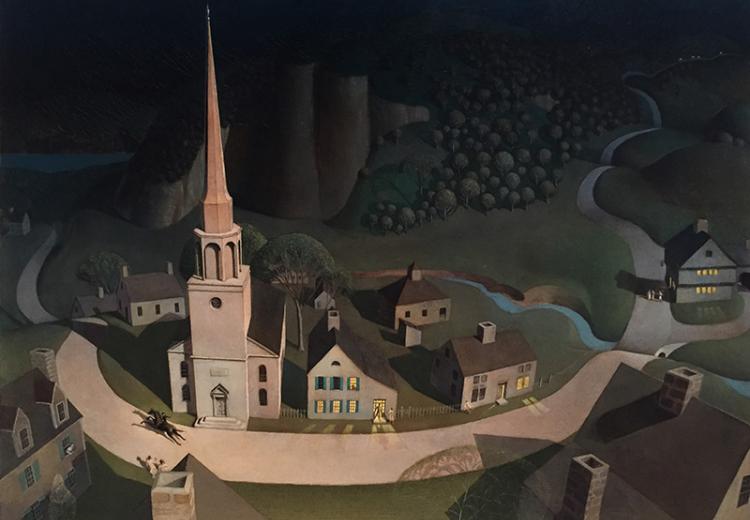Midnight Ride of Paul Revere: Fact, Fiction, and Artistic License

Grant Wood, "Midnight Ride of Paul Revere," 1931.
An interdisciplinary lesson focusing on Paul Revere's Midnight Ride. While many students know this historical event, this lesson allows them to explore the true story of Paul Revere and his journey through primary source readings as well as to compare artist Grant Wood's and poet Henry Wadsworth Longfellow's interpretations of it.
Grant Wood painted American scenes and subjects during the first half of the 20th century in a simplified style reminiscent of American folk art. Like poet Henry Wordsworth Longfellow, Wood wished to tell and preserve stories of the American Revolution. Longfellow wrote his poem 88 years after the event when he found letters belonging to his grandfather, who had known Revere. Only a few people who had been children during the Revolution were still alive in 1860 when he wrote Paul Revere's Ride. Wood based his 1931 painting on Longfellow's heroic poem with no attempt to make it historically accurate.
This lesson encourages close study of Wood's painting, American Revolution primary sources, and Longfellow's poem to understand the significance of this historical ride in America's struggle for freedom. By reading primary sources, students learn how Paul Revere and his Midnight Ride became an American story of patriotism.
Guiding Questions
What does the visual evidence in Wood's painting tell us about this American legend and historical event?
What is the true story of Paul Revere and others' midnight ride?
Learning Objectives
Discuss and analyze how Grant Wood manipulated viewpoint, composition, and scale in his painting "The Midnight Ride of Paul Revere" to present an idealized view of this American tale.
Understand the significance of the midnight ride to United States history.
Analyze different perspectives about this event, using primary sources.
Synthesize the primary and secondary source works to develop an overall sense of the events.
